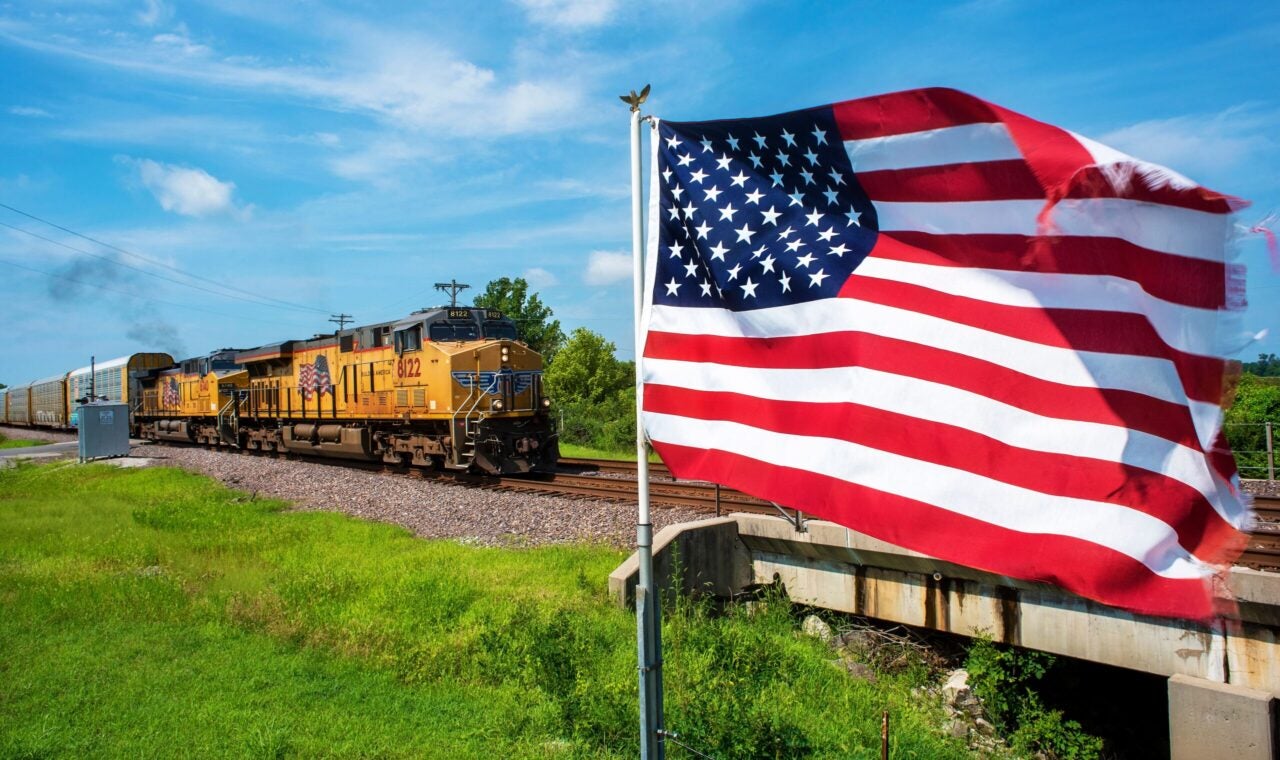
The US railway network has seen vast amounts of funding injected into its framework over the last 40 years Frankie Youd speaks to Didem Cataloglu, CEO of DIREXYON Technologies, to find out more about the company as well as suggestions as to where the industry should be investing its finances.
The last 40 years has seen private railways spending over $700bn to improve and develop the current network infrastructure. Alongside this the Bipartisan Infrastructure Law – legislation put in place to further develop the US’s roads, bridges, and railways – includes $102bn of rail funding to enhance the nation’s rail network.
How well do you really know your competitors?
Access the most comprehensive Company Profiles on the market, powered by GlobalData. Save hours of research. Gain competitive edge.

Thank you!
Your download email will arrive shortly
Not ready to buy yet? Download a free sample
We are confident about the unique quality of our Company Profiles. However, we want you to make the most beneficial decision for your business, so we offer a free sample that you can download by submitting the below form
By GlobalDataWith all of this investment taking place, where and how should rail companies be using these funds?
DIREXYON Technologies, a Canadian tech company that specialises in advanced financial modelling tools, believes that digital transformation is key for the railway industry to efficiently develop its infrastructure. The introduction of this digital technology will allow the industry to allocate assets, financially plan and prepare for a variety of outcomes, and be ready for ‘what if’ scenarios.

Frankie Youd: Could you provide some background on the company?
Didem Cataloglu: Direxyon Technologies was founded by Pierre Vigneault in 2001. The company was founded from a financially strategic mindset, with a vision of helping businesses and cities make sustainability decisions over the long term.
Our mission is to support decision makers with advanced financial modelling tools to streamline processes, optimise spending and cater to a more sustainable future. We use scenario planning and outcome modelling to help companies achieve lasting goals and make profitable decisions for sustainable asset lifecycle management.
Could you explain how Direxyon can assist the rail industry?
In the rail industry, we are already helping major players in the space to optimise assets and maintenance, manage risk, and streamline processes with our solution, the Direxyon Suite. Rail companies need to be able to make data-driven decisions and we provide the tools to empower these decision-makers to make an actionable plan and achieve business goals.
We help companies simulate the evolution of the network and understand the impact of their strategies on the long term to achieve a more resilient and sustainable network. This helps owners and operators of all sizes in the rail industry achieve greater efficiency, meet compliance regulations, and enhance operational performance, by improving maintenance and renewal decisions with minimal time and cost.
Rail is receiving increased funding, where does the company think key areas of spending should focus on?
Many people in the rail industry are resigning and turnover is higher than ever. A portion of incoming funding should go toward preserving subject matter expertise for companies to remain resilient. Those resigning are not just junior employees, but also those with five, ten, even 20 years of experience. Traditional processes in the field and in surrounding disciplines will all be affected.
Digitalising the rail industry is essential to future success and provides opportunities to capture institutional knowledge. Today, digitalising the business facilitates processes and decision-making, particularly in a period when there is a high degree of churn among personnel ranks.
Investing in new infrastructure to accommodate new technologies with incoming government funding will be essential for companies and cities to be more forward thinking.
“Investing in new infrastructure to accommodate new technologies with incoming government funding will be essential for companies and cities to be more forward thinking.”
Rail companies need to invest in new technologies to replace older technologies to maximize benefits of modern digital asset management when optimizing infrastructures. With the amount of data available today, old technologies will not be as capable as modern platforms to process data, analyse it and drive quicker decision making.
Why are these areas the most important for investment?
The cost of hiring and training new employees is much higher than the cost of retaining top talent already in the role. A key part of investing in the future is investing in people.
Preserving subject matter expertise will be essential for companies to remain resilient and manage risk. Software technologies such as decision analytics can mitigate risks of employees resigning by digitalising their expertise and fast-tracking employee onboarding.
This can also quantify and identify the root causes of resignations and create better retention programs. Organisations inevitably lose personnel, but technology can lessen the impact.
Over the last 40 years, private railroads have spent over $700bn to develop current networks; and new rail funding is available as of recent with the US Congress passing a $284bn bill to improve transportation infrastructures across the country – $66bn going to rail.
Rail decision makers must use this funding strategically, and new technology can predict and assess how to do that. In the wake of the pandemic, an organisation’s ability to adapt quickly to supply chain disruptions, time to market pressures, and rapidly changing customer expectations has become critical.
Enhanced technology can also improve rail infrastructure by bettering asset performance, reliability, and availability while enabling predictive and proactive maintenance. Much of rail infrastructure is aging and operating on old technology. To improve operations, maintenance processes, and lifecycle management, modern technology platforms can benefit rail infrastructure in the short, medium, and long-term.
Do you think that digitalisation will be a key area of development in the next coming years?
I am confident digitalisation will be a key area of development in the rail industry in the coming years. In fact, the transition has already started – we are witnessing the change now.
Especially as we make the move toward clean energy, digitalisation will play an even more vital role for organisations to be adaptable to changing regulations and sustainability goals. Decisions for asset investment in your clean energy transition should evolve with great agility along with unprecedented contingencies that can occur as we transition toward net-zero initiatives by 2050.
As the AI market matures, we find ourselves progressively adopting more innovative, AI-driven algorithms to support decision-making. Taking advantage of these tools and resources will give organisations an edge toward becoming forward-thinking and innovative as it relates to sustainability and clean energy.







